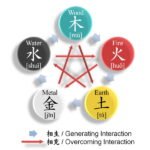LIG Nex1’s guided missile Hawk
South Korea has decided to extend the range of missiles for exports to 500 kilometers from the current 300 km after accepting such requests from client countries in the Middle East.
The Office of the President of the Republic of Korea earlier this month held a National Security Council (NSC) meeting and approved the missile range extension, military industry sources said on Tuesday.
“There were requests (from some Middle Eastern countries) to address the issue of the short range of missiles in (Korean) multiple rocket launchers,” said one of the sources.
The United Arab Emirates (UAE) imported Korea’s Chunmoo multiple launch rocket system (MLRS) in 2017. Saudi Arabia has recently purchased Chunmoo and deployed it.
In April, Hanwha Aerospace Co., a leading defense company, signed a $1.64 billion deal to supply 72 units of CTM-290 Chunmoo MLRS to Poland.
Hanwha Aerospace’s Chunmoo multiple launch rocket system (MLRS)
The $1.64 billion Chunmoo contract is part of an estimated $22 billion agreement Korea reached with Poland in 2022.
Poland, a North Atlantic Treaty Organization (NATO) member country, has been building up its military capacity following Russia’s invasion of Ukraine.
REMOVAL OF US-ROK BALLISTIC MISSILE GUIDELINES
South Korea can now develop ballistic missiles with a range of thousands of kilometers capable of reaching targets far beyond the Korean Peninsula, following the US approval to lift a 42-year-old restriction on its ally’s missile development program in 2021.
However, missiles for exports are subject to warhead weight and range restrictions imposed by the Missile Technology Control Regime (MTCR).
Hanwha Aerospace CEO Son Jae-il (left) and Artur Kuptel, head of the Polish State Armament Agency, sign a $1.6 billion Chunmoo rocket launcher deal on April 25, 2024
The Chunmoo missile system custom-tailored for Poland has a maximum range of 290 km due to the MTCR restrictions.
The MTCR is a multilateral export control regime. It is an informal political understanding among 35 member states that seek to limit the proliferation of missiles and missile technology. South Korea joined it as the 33rd member in March 2001.
DEFENSE FIRMS TO UP MISSILE RANGES FOR EXPORTS
Military sources said they expect the Defense Acquisition Program Administration (DAPA) to soon give the final approval for changes related to missile exports following the NSC decision.
Kim Min-seok, a research fellow at the Korea Defense and Security Forum (KODEF), said: “The Korean defense companies will likely improve the missile range by reducing the warhead weight.”
With the DAPA’s final approval, it would also be possible for South Korea to export missiles with a range of 900 km, similar to the KN-23 North Korea has exported to Russia, he said.
North Korea test-fires a ballistic missile off Its East Coast
Military experts said Seoul could conflict with the MTCR’s regulations banning exports of weapons of mass destruction (WMD).
A military official, however, said multiple rocket launchers fall under Category 2, meaning the intent of the weapon-importing country is important as a control criterion by the MTCR.
South Korea’s decision to extend missile ranges comes amid heightened tension in the Middle East such as the Israel-Hamas war and the threat of an all-out war between Israel and Iran.
If the missile range of the Chunmoo system exported to the UAE extends beyond 500 km, it could directly strike Iran’s mainland across the Persian Gulf, analysts said.
Exports of missiles with a longer range could also provoke a backlash from Russia in war with Ukraine, they said.
“The US, which is hoping that South Korean weapons play a bigger role in Europe, may have agreed to the range expansion before the NSC decision,” said a military expert in Seoul.
By Dong-Hyun Kim
3code@hankyung.com
In-Soo Nam edited this article.















